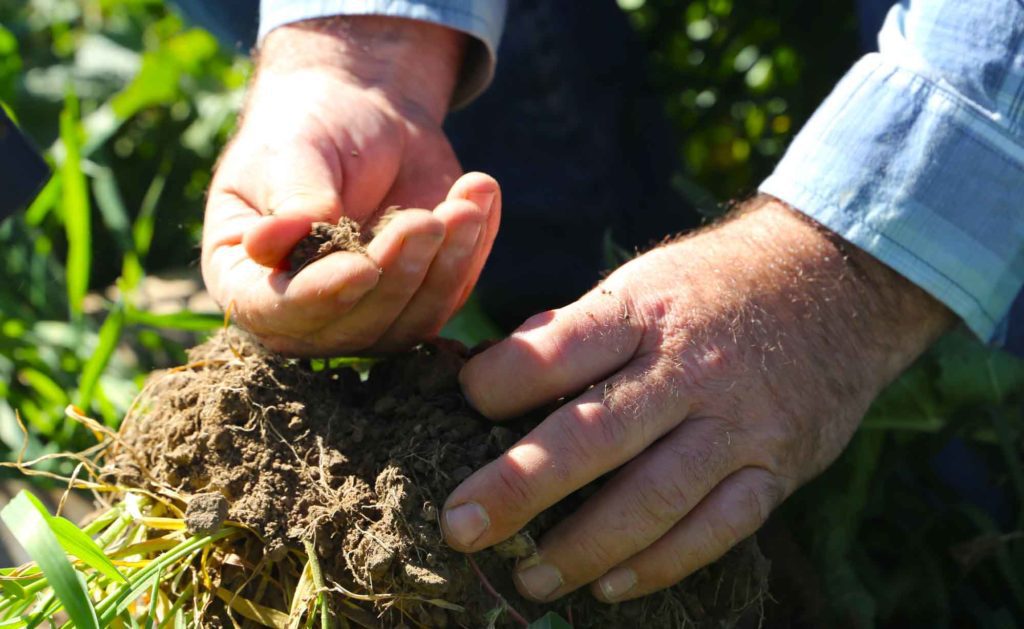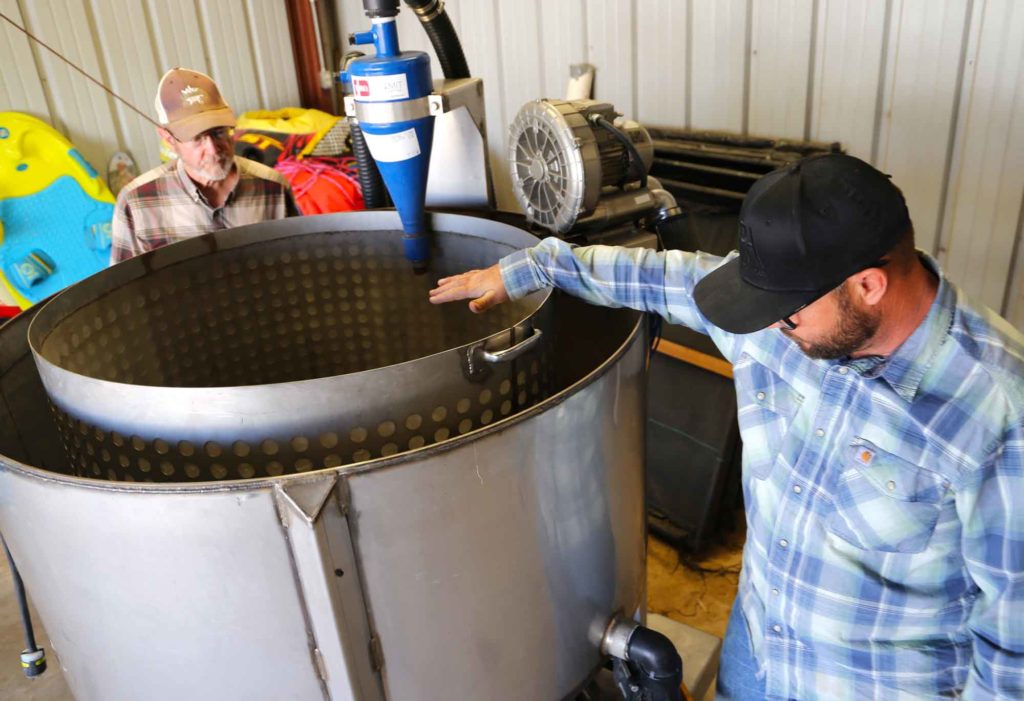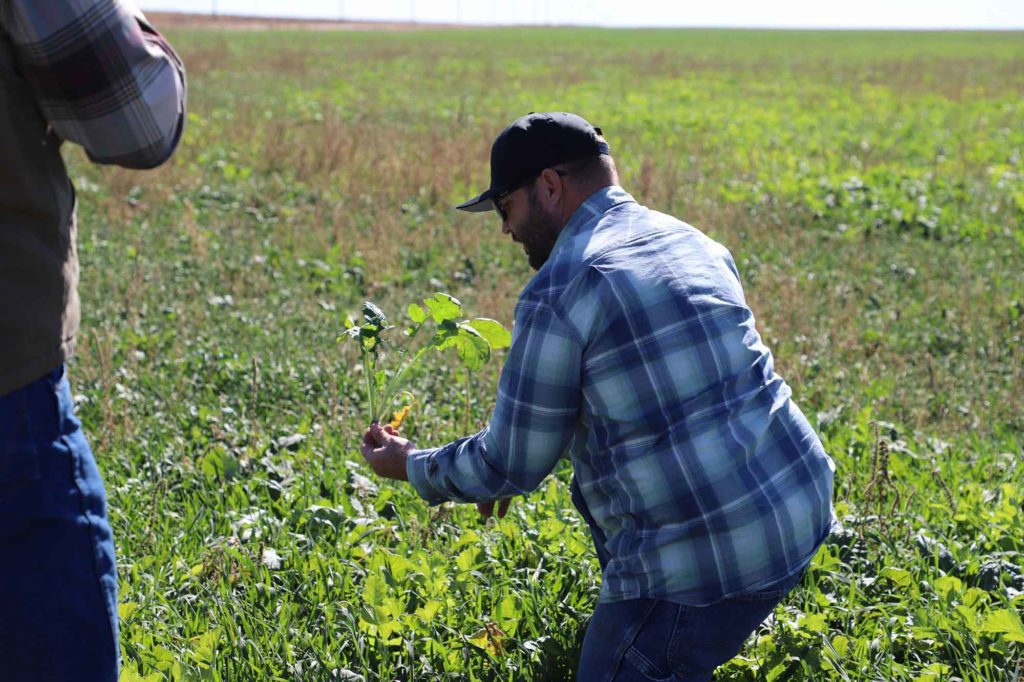Compost
Johnson Su Composting
One of the biggest breakthroughs in improving soil health at Young and Son (farming entity of Young Red Angus) has been the addition of Johnson Su Compost. Johnson Su Compost is a fungli-dominated compost that takes a year to make. It is unique because this compost never goes anaerobic. You will be hard-pressed to find a compost that has a higher fungus-to-bacteria ratio than Johnson Su compost. This composting process has not only increased the soil health at Young and Son but it has also increased the profitability of the operation.

How Compost Is Made
Johnson Su compost is made by creating a bioreactor. We currently have two ways of making our bioreactors. We make them by breaking down an IBC Tote. We remove the bladder from the tote. We then line the cage of the IBC Tote with weed barrier matt. Once the tote is lined with a weed barrier mat we then evenly space 5 four-inch PVC Pipes in the bioreactor. Once the pipes are in place, we are ready to fill the bioreactor with material to make compost.
Compost Materials We Use
When filling your Johnson Su compost, you need to make sure you pick the right material. Dr. Johnson has been able to compost a variety of materials and had had very good success using a lot of different food sources for compost. Our most constant compost has been made by using 60% Corn Stalks, 20% grass clippings, 10% horse manure, and 10% wood chips. Our advice is to use 50-70 carbon sources. For more information on why your material matters check out this youtube Video.
Filling The Compost Bioreactor
Filling the bioreactor takes time. To fill your bioreactor, you need to set up a container like a small baby pool or horse tank to soak the material in. This is called the bathing process. This allows sand and other particles to fall to the bottom. Once the materials are soaked well the materials can be taken out and allowed to drain a bit before being put into the bioreactor. The water consistency needs to be damp about 70% water by volume. If you squeeze material in your hand 1-2 drops of water should be able to be squeezed out. If you have a lot of water running out of the bottom you are probably getting it too wet. It’s okay and there is no need to panic. After the bioreactor is filled the next few days lightly water the bioreactor keeping the top moist until there is no water draining out the bottom. We have also used a feed truck to fill the bioreactors in the past. Those bioreactors went anaerobic. After doing bioreactors sense 2020 I believe these went bad because I over-wet them and I used materials that were too green. (hay that was green when it was cut). If you want to try utilizing the feed truck method, we show the process in this video
Maintenance
Maintenance of the bioreactors just takes constancy and a watchful eye. You want to water the bioreactors one gallon a day roughly. Watch your bioreactors. If water starts to leak out the bottom you are getting them too wet. If the sides and tops dry you might not be getting them wet enough. Chances are you may screw things up. It’s a part of learning. We have actually screwed at least one up a year. In 2022 even though we have 2 batches that are completely bad we have made our best compost. Now we know the materials we need and the consistency on how they need to be watered. There are people that get it right the first time and never have any issues. I also know people who have given up. Whether you get it right every time or make mistakes like we did; I encourage you don’t give up. Keep working on it, ask people’s advice, and keep working at it until you succeed. You will be glad if you do.

How Composts Is Applied
Applying the compost can be done in three ways: Seed Treatment, In furrow, or foliar application. Currently, we have been doing seed treatments on wheat, milo, and cover crops and have been doing in-furrow treatments when planting corn and milo. We plan on doing foliar treatments in the future.
Financial Impact
Applying compost extract has been one of the biggest money savers the farmer has ever come across. By applying compost extracts to our fields, we have been able to reduce our nitrogen cost dramatically and have stopped applying phosphorus.

Soil Health Benefits
By adding Johnson Su compost, switching to no-till adding cover crops, and following the other soil health principles we have seen a huge increase in the health of our soil. We have increased water filtration, brought back many beneficial insects, seen a boom in the earthworm population and we have noticed a huge increase in the number of fungal hyphae that we connected to the roots of our plants. We really are excited about the future that is in store here at the farm.

